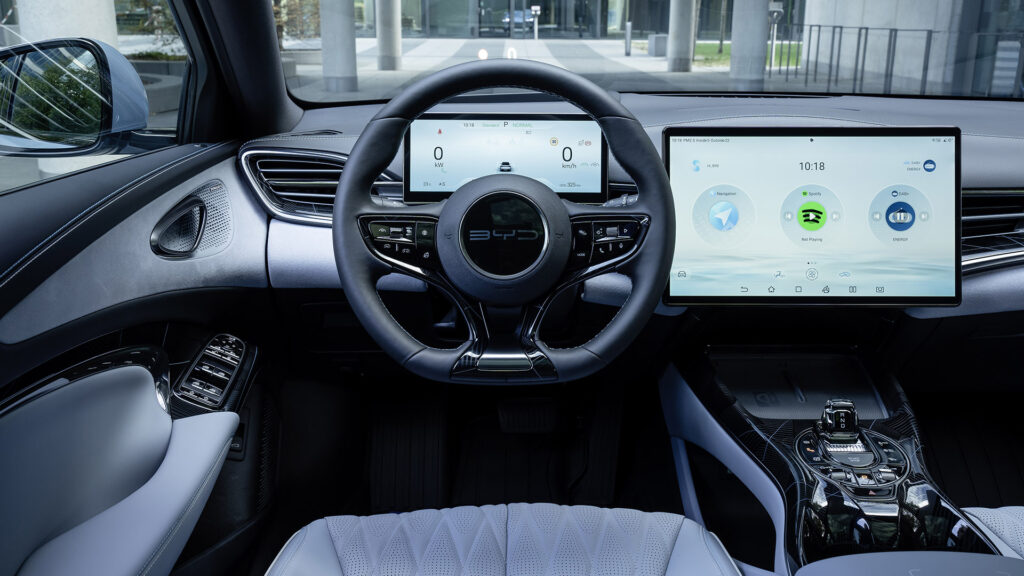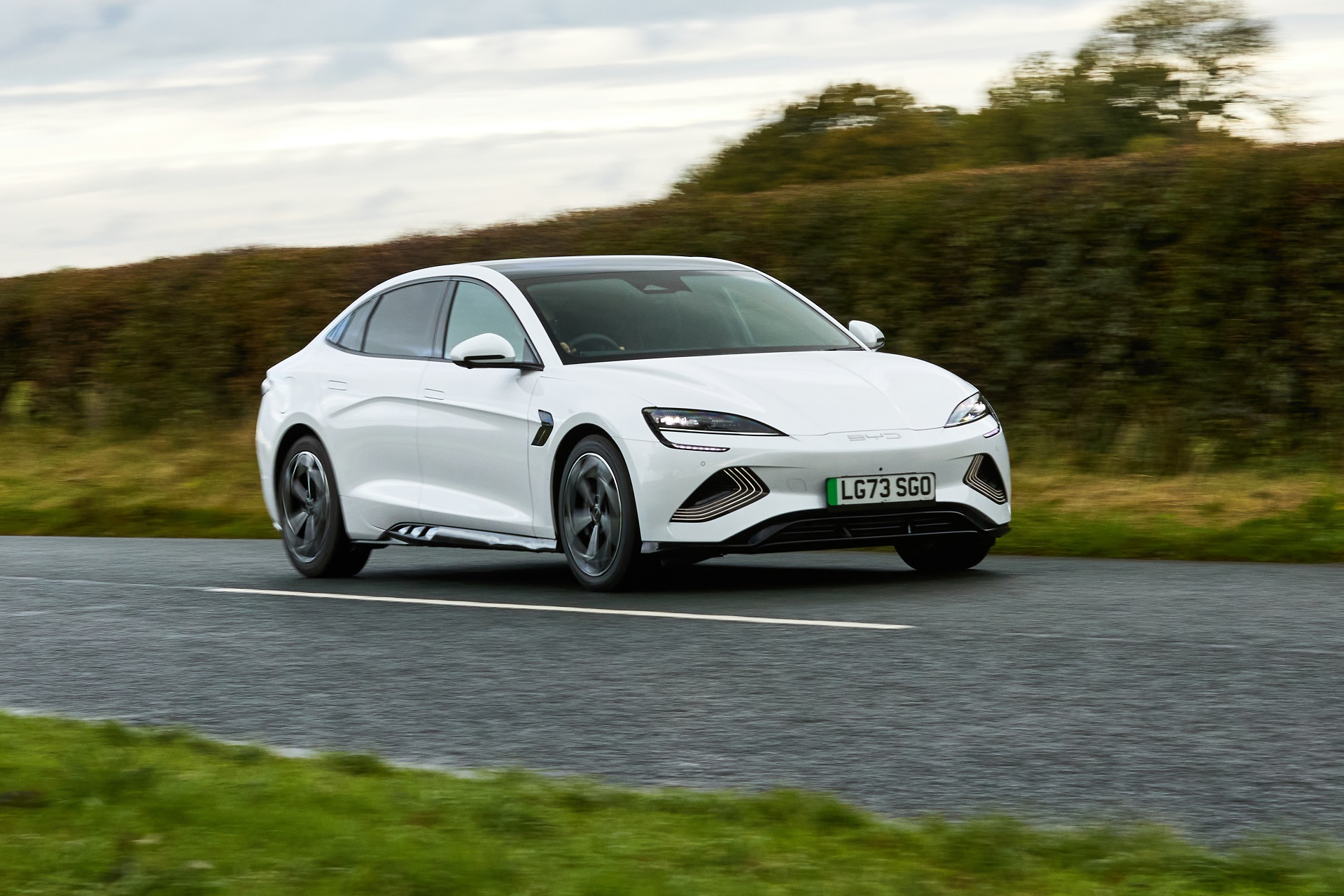I recently had the chance to test drive the much-anticipated BYD Seal, and I must say, this car is something else. With all the hype around BYD’s latest EV sedan, I was curious does it truly live up to expectations? Is it worth its hefty price tag? Here’s everything you need to know about the BYD Seal in terms of performance, features, and long-term ownership costs.
First Impressions

The first thing that strikes you about the BYD Seal is its design. It’s sleek, aggressive, and undeniably premium. The sharp lines, coupe-like silhouette, and distinctive LED lighting make it stand out on the road. It reminds me of a blend between a Tesla Model 3 and a Porsche Taycan, which is a huge compliment.
I got inside, and the interior felt just as premium. High-quality materials, a massive touchscreen, and a cockpit-like setup make it feel futuristic yet functional. BYD has clearly stepped up its game when it comes to interior quality.
Performance and Driving Experience
The BYD Seal comes in multiple variants, but the top-end model boasts some serious numbers. We’re talking about:
- 389 HP (Performance AWD variant)
- 670 Nm of Torque
- 0-100 km/h in just 3.8 seconds
That’s proper sports car territory. Driving it felt thrilling the acceleration is instant, and the all-wheel-drive system ensures the car grips the road beautifully. Even the lower variants, with a single motor setup, feel incredibly responsive.
Steering is sharp, and while it doesn’t quite have the razor-sharp handling of a BMW M340i, it’s still very engaging. The BYD Seal is more of a sporty cruiser than a hardcore performance machine, but for an EV, it’s genuinely impressive.
Ride Comfort and Suspension

One of my biggest concerns was whether the BYD Seal would be comfortable enough for daily driving. And I’m happy to report that it is.
The suspension is well-tuned firm enough to give a planted feel on highways but soft enough to handle Indian roads. Unlike some EVs that feel overly stiff, the BYD Seal strikes a nice balance. However, on really rough roads, you do feel the stiffness a bit, but it’s nothing unbearable.
Features and Technology
BYD has thrown in a lot of tech in the BYD Seal, making it a feature-rich package. Some highlights include:

- 15.6-inch Rotating Touchscreen (just like the Atto 3)
- 360-degree camera for easy parking
- ADAS (Advanced Driver Assistance Systems)
- Heads-Up Display (HUD)
- Panoramic Glass Roof
- V2L (Vehicle-to-Load) Function – You can power appliances using the car’s battery
- Premium Sound System – Comparable to what you get in high-end German cars
The software is smooth and responsive, but just like in other BYD cars, there’s a bit of a learning curve. The sheer number of features can feel overwhelming at first.
Range and Charging Time

Now, let’s talk about the most important aspect of any EV the range.
The BYD Seal is powered by BYD’s advanced Blade Battery, which is known for its durability and safety. It offers:
- 570 km range (single motor variant)
- 520 km range (AWD performance variant)
In real-world conditions, expect around 450 km, which is still excellent.
Charging times are also quite good:
- DC Fast Charging (10-80%) in 40-50 minutes
- AC Home Charging (0-100%) in 8-9 hours
So range anxiety? Not really a concern here.
Ownership Costs and Maintenance
One major advantage of the BYD Seal is the low maintenance cost. Unlike petrol or diesel cars, EVs have fewer moving parts, which means fewer things can go wrong.
- No oil changes
- No spark plugs
- No complex transmission issues
However, the battery replacement cost is still unknown, and while BYD claims the Blade Battery is extremely durable, long-term real-world reliability is something we’ll only know with time.
As for running costs, charging at home will be significantly cheaper than refueling a petrol car. Even using public fast chargers, you’ll be spending far less compared to a petrol-powered sports sedan.
How Does It Compare to Rivals?
The BYD Seal competes directly with the Tesla Model 3, Hyundai Ioniq 5, and even premium sedans like the BMW 3 Series (in terms of pricing). Here’s how it stacks up:
| Feature | BYD Seal | Tesla Model 3 | Hyundai Ioniq 5 | BMW 330i |
|---|---|---|---|---|
| Power (HP) | 389 HP | 450 HP (Performance) | 320 HP | 255 HP |
| 0-100 km/h | 3.8 sec | 3.1 sec (Performance) | 5.2 sec | 5.8 sec |
| Range | 520-570 km | 500-600 km | 470-500 km | NA (Petrol) |
| Price | ₹60-65 Lakh | ₹70-75 Lakh | ₹50-60 Lakh | ₹72-75 Lakh |
For Clear Table Visibilty Please Rotate Your Device In Portrait
As you can see, the BYD Seal offers a strong package for its price. It may not be as fast as the Model 3 Performance, but it undercuts it in price while offering nearly the same range and features.
Is the BYD Seal Worth It?
If you’re looking for a premium, high-performance EV sedan with good range, comfort, and technology, then YES the BYD Seal is absolutely worth considering.
Pros:
- Sleek design and premium interiors
- Powerful and fast (AWD version is a beast)
- Long range and fast charging
- Loaded with features and technology
- Low running and maintenance costs
Cons:
- Slightly firm suspension on bad roads
- Touchscreen-heavy controls may not appeal to everyone
- Expensive compared to Hyundai Ioniq 5
If you’re coming from a petrol-powered performance sedan like a BMW or Audi, it will take some getting used to. But once you do, you’ll appreciate the BYD Seal for what it is a world-class EV that’s pushing the boundaries of what electric sedans can be.
Would I buy one? Well, if I were in the market for a premium EV, the BYD Seal would definitely be at the top of my list. What about you? Let me know in the comments! 🚗⚡






